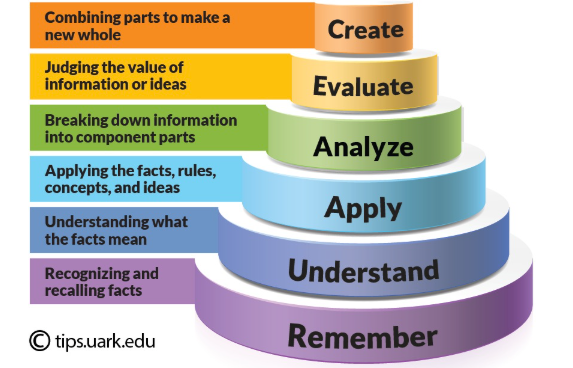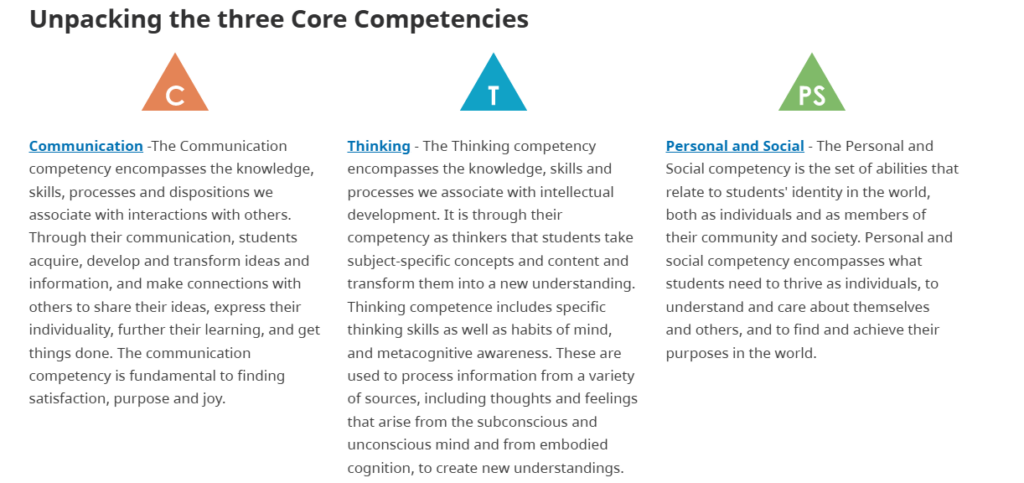Blog Post #2- Planning For Learning
Backwards Design and Understanding by Design
The Backwards Design theory in education is the notion that lessons and units have better outcomes when teachers focus on the “big idea” and overarching learning outcomes when building lessons. This works by deciding on the end goal and working backwards through the lesson or unit to develop ways in which the students are going to achieve that goal.
Jennifer Gonzalez is an educator and host of her podcast “The Cult of Pedagogy Podcast”. Her episodes dive into all things teaching and are great tools for new teachers (or student teachers like myself!) Embedded below is her episode on backwards design and it is definitely worth a listen. You can find her other episodes on Spotify, Apple Podcasts and even on YouTube.
Design Thinking
Design thinking, according to Tim Brown, is using empathy and need to rethink how you can design a product to better the human experience. In his Ted Talk “Urging Designers to Think Big” https://www.youtube.com/watch?v=UAinLaT42xY Brown uses many examples of how people have redesigned inventions and technology to help others struggling with healthcare and people in third world countries. Design thinking can be brought into the classroom as a tool to bridge creative thinking and social/emotional learning. Teachers can use creative instruction to encourage students to create tools to better their peer’s learning.
Learning Outcomes and Bloom’s Taxonomy
Bloom’s Taxonomy is a great teaching tool to develop achievable and helpful learning targets and create foundational learning outcomes. Bloom’s Taxonomy is a process that teachers can follow to create learning outcomes (University of Arkansas). Bloom theorized that there are 6 skills to furthering one’s knowledge and that each skill scaffolds onto the next (University of Arkansas). Below is a helpful diagram that lists each skill, with “remember” being the most foundational skill and “create” being the most advanced.

Using Bloom’s hierarchy helps educators develop learning targets that apply to their lessons and create deeper understanding. Listed below are some examples of learning objectives that do not adhere to Bloom’s taxonomy and create only surface-level tasks and learning objectives that adhere to Bloom’s taxonomy and create deeper tasks.
| Surface-level Task | Deeper Task |
| By completing this unit, students will enjoy simplifying fractions. | By the end of this lesson, students will be able to simplify fractions. |
| Because of this lesson, students will understand why pollinators are important to our ecosystem. | By the end of this lesson, students will be able to describe why pollinators are important to our ecosystem. |
| Through the butterfly activity, students will learn the different stages of a butterfly’s life cycle. | By the end of this lesson, students will be able to recite the stages of a butterfly’s life cycle. |
As demonstrated above, Bloom’s taxonomy teaches educators to create directed learning objectives that have clear meaning and purpose.
Better Learning Design
BC’s new curriculum shifts the focus from content assessment to “core competencies”. These competencies can be seen as an example of better learning design to create deeper learning among students. The three competencies that create the basis for the new curriculum are:
- Communication
- Thinking
- Personal and social
(BC Ministry of Education)

These competencies look different for each grade level but the goal remains the same— to get students to “engage in deep, lifelong learning” (BC Ministry of Education).
Inquiry and Project-Based Learning
Inquiry-led and project-based learning tasks are great tools to get students excited about learning and to use their skills and creativity within the classroom. There are many ways in which projects can be integrated into learning. One of the most common ways to integrate project-based learning is to swap out traditional tests for projects for summative assessment. The project given could be more structured or more student-led.
Ideas for projects include creating:
- Posters
- Videos
- Presentations
- Podcasts
- Art
- books/ graphic novels
Allowing students to have a choice in their projects encourages students to become more engaged in the material. I still remember some of my favourite projects from elementary and middle years. One of my favourites was building a trivia game based on our class novel in grade 8 English class. I hated the novel but loved watching Jeopardy with my family. Being able to create a game to show my understanding made me more invested in the novel and more excited about my learning.
Inquiry-based projects are also a great way for students to be involved in their learning. In inquiry-led activities, students decide what they want to learn. A great inquiry-led activity is “Genius Hour” projects. Genius hour is a dedicated time (ideally an hour each week) that students decide to learn whatever they want. It could be as simple as learning how to sew, taking up a new sport, learning a new language, or even building something like a video game. Some teachers have their students focus on one topic and create a project to showcase at the end of the term or semester, while others allow their students to switch topics if they decide to do so, focusing on learning for its own sake rather than working towards a project-based end goal.
The challenge that comes with inquiry and project-based activities is that it is often hard to assess students because the projects are commonly open ended. To help with assessment it is important to create a clear rubric and give it to the students at the very start of the activity. It may also been useful to come up with the rubric as a class!
Conclusion
Check out this video by Shelley Moore about removing barriers in the classroom through inclusive planning!
References:
British Columbia Ministry of Education. (n.d.). Core Competencies. BC Curriculum. Retrieved [date you accessed it], from https://curriculum.gov.bc.ca/competencies
Brown, Tim. (n.d.). Tim Brown urges designers to think big [Video]. YouTube. https://www.youtube.com/watch?v=UAinLaT42xY
University of Arkansas “TIPS”. (2022, July 26). Using Bloom’s Taxonomy to Write Effective Learning Objectives. University of Arkansas. https://tips.uark.edu/using-blooms-taxonomy/
